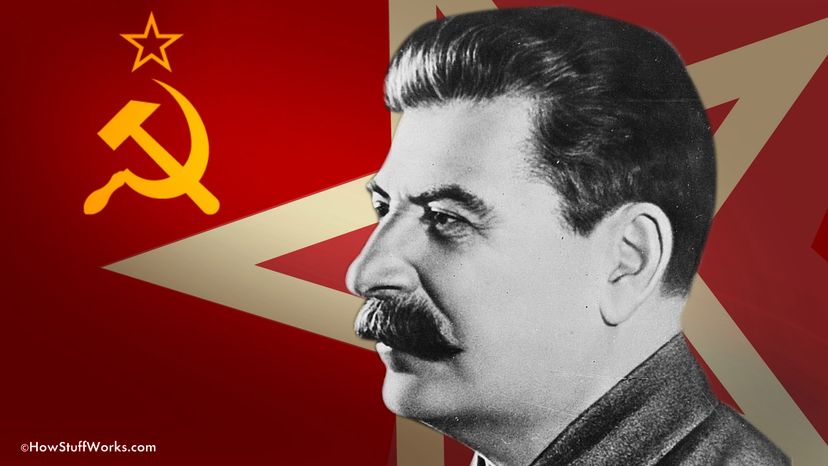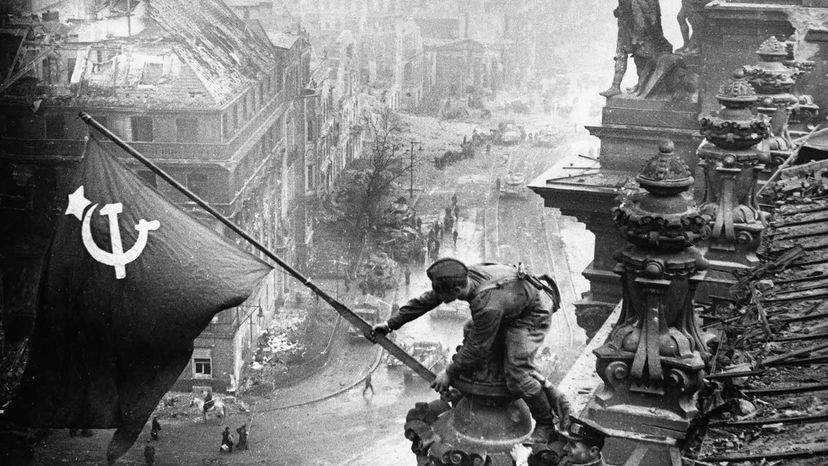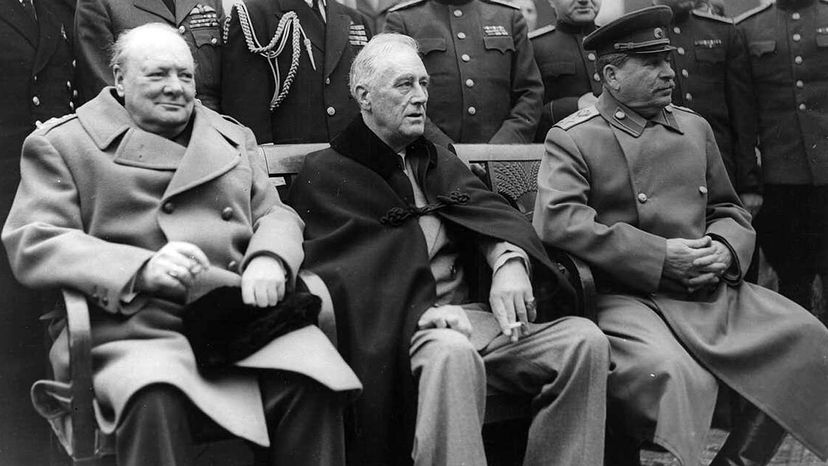THE LAST GREAT FEAST HAS BEEN WISHY-WASH GIVEN TO YOU FOR DECADES - A NICE "WELL LIKE AFRICAN TRIBES NEVER HAD THE GOSPEL GIVEN" - "MARY AMD MIKE DOWN THE ROAD WERE SPIRITUALLY BLINDED ALL THEIR LIVES" - "THE MUSLIMS ARE BLINDED TO GOD'S TRUTH SO WILL RISE IN WHATE THRONE JUDGMENT AND BE OFFERED THE TRUTH." AND THIS IS ALL CORRECT; BUT THE VERY DEEPER TRUTH TO THIS FEAST HAS JUST ABOUT NEVER BEEN BROUGHT TO YOU - THE NITTY-GRITTY I NOW START TO DO SO - HOLD ON TO YOUE SEAT!!! Keith Hunt
7 Atrocities Soviet Dictator Joseph Stalin Committed

In any recounting of the horrific deeds of Joseph Stalin, know this: You'd better settle in, because the list is long, painful to recite, and rife with incalculable suffering and death. Stalin grew his power as general secretary of the Communist Party of the Soviet Union in the early 1920s after the Russian Revolution. He later became the unquestioned and de facto dictator of the Soviet Union and was shockingly ruthless when it came to killing his people.
Yet it could be argued that Stalin was simply a product of his time, one of many cruel, evil men in the 20th century. In China, Mao Zedong killed millions, while tens of millions more Chinese died from starvation and suicide in the Great Leap Forward.
Stalin is often compared to Adolf Hitler, who killed some 6 million Jews in the Holocaust. In the Ottoman Empire in the early part of the 1900s, leaders carried out the near-genocide of millions of Armenians. Many millions died as the result of Japanese war crimes during World War II under Prime Minister Hideki Tojo and Emperor Hirohito.
Even in the Soviet Union, Stalin's predecessor, Vladimir Lenin, was unforgiving in leading his party through a brutal revolution that claimed some 9 million lives.
"The problem in teaching Stalinism," says Matthew Payne, a professor who specializes in teaching modern Russian and Soviet history at Emory University in Atlanta, "is how not to dismiss what was a very brutal regime while also contextualizing it in a very unstable part of world history. For me, it's always a question of, 'Did Stalin make the revolution, or did the revolution make Stalin?' Mostly, I would have to say the revolution made Stalin."
Stalin clearly has his place among history's most murderous ideologues. The numbers of dead under Stalin's rule (what came to be known as Stalinism) are somewhat disputed, given the secretive and oft-times sketchy record-keeping during his terrorist reign. But through his direct order, millions in the Soviet Union died by execution, and more perished in labor camps. Millions more starved to death through his ill-conceived and often purposely cruel policies. Seven of the most heinous acts he committed are below.
1. The GULAG System
Lenin founded the GULAG (an acronym for, in English, Main Administration of Collective Labor Camps), the network of prisons and forced labor camps throughout the Soviet Union. But it was Stalin who employed them to their most hideous and at least semi-effective ends. The camps, like prisons throughout the world, were used to house criminals. The GULAG's primary purpose, though, was to gain control of the population through fear — by imprisoning, torturing and killing undesirables, critics of Communism and anyone who defied Stalin — to drag the Soviet Union from its agrarian past into an industrialized society. More than 3.7 million Soviet citizens were forced into the camps, many in the most remote and barren areas of the country, between 1931-1953, according to one report. Almost 800,000 of them were shot.
From "The Unknown Gulag: The Lost World of Stalin's Special Settlements:"
The GULAG at one time totaled nearly 500 camps. More people passed through the GULAG system, for a much longer time, than were imprisoned in the concentration camps of Nazi Germany in their entire existence.
"The purpose of the GULAG was not to kill people," Payne says. "[It] was designed to discipline society ... It's really about social control."

2. Collectivization, Dekulakization and Special Settlements
From about 1929 to 1932, in the name of furthering Communism and strengthening his hold on the state, Stalin seized the land and property of millions of peasant families and forced them off their property (with many landing in the GULAG).
These people — "kulaks" — were the richer of the peasant class and seen as a direct threat to Stalin's rule. So they were dispossessed, many were murdered, and the others were exiled and forced to work in collective farms or in GULAGs in mining or construction, where millions more died.
Stalin, worried about subversive elements within Soviet borders, also ordered the forced resettlements of entire populations — people of specific nationalities living in the Soviet Union that were either deported or moved to remote areas of the country — into what some call "special settlements."
With his "dekulakization" policy, Stalin effectively wiped out an entire class, badly damaging the agricultural sector of the economy, which contributed to millions more dying in the Great Famine. More on that chapter next.
3. The Great Famine
According to "The Harvest of Sorrow: Soviet Collectivization and the Terror Famine," around 14.5 million people died of starvation in the Great Famine of 1932-33, also known as Holodomor. Estimates of the number of dead vary widely, but it's generally agreed that millions perished — Ukraine and Kazakhstan were especially hit hard. And unlike other famines where drought was the main cause, it was Stalin's policies toward industrialization and away from small farm food production that contributed to this disaster.
In addition, Stalin used the food shortages strategically, making sure that certain areas were affected more than others. He baldly welcomed many of the deaths, especially when it came to enemies of the state, "kulaks," and "idlers" (those who did not work on the collective farms). He quoted Lenin in saying that, "He who does not work, neither shall he eat." Many consider the Great Famine nothing short of a genocide and blame Stalin directly.
From "Stalin's Genocides," by Norman M. Naimark:

4. The Great Purge
In 1936, Stalin initiated "The Great Purge," aiming to rid the Communist Party of some of his biggest detractors and rivals. Hundreds of thousands of people initially were arrested by Stalin's NKVD (the secret police). Many were executed or sent to the GULAG. Of the 103 highest-ranking members of the Communist Party, 81 were executed.
Eventually, more than a third of the Communist Party died during The Great Purge, which had the effect of terrorizing the general population, too. Many people turned on friends and family members in an attempt to save themselves from the GULAG or sure death. In the end, not even the head of the NKVD, Nikolai Yezhov, was spared. He was executed in 1940.
But high-powered NKVD police like Yezhov didn't just disappear from life, they also disappeared from photos. Stalin understood the historical value of photographs and how to use them for propaganda. Stalin went so far as to use photo retouchers to delete his enemies from photographs, including Yezhov, who was essentially removed from the historical record.

5. Order No. 227
Stalin's brutality did not stop with civilians and enemies of the Communist Party. It extended to the very people that were fighting for him and the country. In 1942, as Germans pushed their way toward Stalingrad in the early days of World War II, Stalin issued one of his most well-known and cold-blooded edicts, Order No. 227. It declared that "panic-makers and cowards are to be liquidated on the spot."
The order also called for penal battalions — lesser-offending soldiers were sent to the front lines — and "guards units" at the back of the line would keep cowards from retreating. It's unclear how many Soviet soldiers died by the hands of their fellow soldiers under Stalin's order.
6. Punishing Prisoners of War
In another famous order, Stalin said that, "We have no prisoners of war, only traitors of the motherland!" From "Hitler's War in the East, 1941-1945: A Critical Assessment":
Millions of Soviet prisoners of war were interrogated on their return, about half were sent to the GULAG and many thousands were shot or otherwise died at the hands of their countrymen.
7. Giving a Pass to War Crimes
Though Stalin sent thousands of his own Soviet prisoners of war to their deaths, he turned a blind eye to how his soldiers performed on the battlefield. If they fought "admirably" — meaning if they won battles — Stalin did not bother himself with how they did it, or the fallout after. After hearing reports that Soviet soldiers raped women in Germany and elsewhere, he is reported to have said "[W]hat is so awful in his having fun with a woman, after such horrors?"
Stalin continued to run the Soviet Union with a clenched fist for most of his life. The GULAG, in fact, still held about 2.5 million inmates in 1953, the year he died. But the GULAG, and Stalinism, all unraveled after his death.
"The terror state that Stalin built was dismantled very quickly by his successors," Payne says. "One of the reasons was, it was highly inefficient. Putting lots and lots of people into prison, even if you're working them, is not a great way to run your country."

Today, despite murdering millions of his country's citizens, Stalin's place in Soviet history is hardly clear cut. After all, he also helped beat back Nazi Germany, was on the winning side of the last great World War and pushed the Soviet Union toward superpower status.
In a 2019 Levada Center poll, 51 percent of Soviets said they liked, admired or respected him.
"In part, it was a Messianic state, right?" Payne says of the Soviet Union under Stalin. "Communism was about achieving an ideal society by mobilizing forces to produce a just society." Stalin and his Communist Party were not as much about repression, Payne says, as they were about building that Utopia that Naimark mentions.
The problem with that, Payne says, is that "the worst students of humanity historically are generally ... those people who feel that that they're on the side of the angel. And the communists simply thought they were on the side of the angel."
Originally Published: Jan 29, 2020
No comments:
Post a Comment